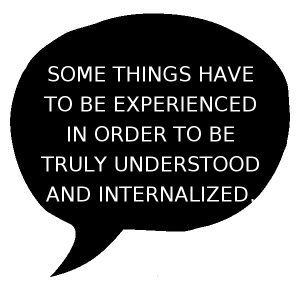Author and Editor: Dr. Kelvin Thompson
Dear ADDIE:
My faculty clients are struggling with meaningfully engaging their students online. Some question the value of online discussions entirely while others recognize the value of student engagement but seem ill-equipped to achieve it. As an example, please consider the following excerpt from a message I received this week from one of my faculty:
As you know, I have been teaching Economics here for a few years now both on-ground and online. In my face-to-face courses, I can usually generate a good amount of discussion around the subject and see how engaged they are and feed off their responses. However, when I teach this same course online, the discussions are anything but stimulating or engaging; even though i’m using the same discussion questions. The students limit themselves to a quick sentence or two and don’t seem interested in replying to each other. What can I do to motivate my students and get them excited about Economics?
What can you offer to help me help this faculty colleague and the many more like her?
Signed,
Engaged in Helping Faculty Engage More
Dear Engaged:
Yes, the ubiquity of the asynchronous discussion seems to be both a blessing and a curse. While it is wonderful that so many courses allow easy access to this communication venue, perhaps its general presence belies the challenges inherent in skillfully using this engagement tool. The good news, of course, is that there are many research-based and professional practice  resources for faculty and designers wishing to make online discussions better (e.g., via well-constructed prompts, scoring rubrics, interaction protocols, etc.). [Readers: You might wish to review the numerous entries related to online discussions in the Teaching Online Pedagogical Repository.] The bad news is, as you know, it is difficult to simply disseminate these findings to faculty and expect the situation to improve. It has been our observation that some things have to be experienced in order to be truly understood and internalized.
resources for faculty and designers wishing to make online discussions better (e.g., via well-constructed prompts, scoring rubrics, interaction protocols, etc.). [Readers: You might wish to review the numerous entries related to online discussions in the Teaching Online Pedagogical Repository.] The bad news is, as you know, it is difficult to simply disseminate these findings to faculty and expect the situation to improve. It has been our observation that some things have to be experienced in order to be truly understood and internalized.
Depending upon your existing faculty development offerings for your faculty who teach online, you might find it helpful to provide personal, hands-on experiences with the kind of rich, engaging online discussions that the literature suggests is possible. This is perhaps best realized in an actual online course experience spanning multiple weeks so that faculty-as-participants can experience both the mechanics and the timeframe involved in effective online discussions.In speaking with faculty colleagues, we have found that even among those who participated in online discussions in graduate school, many had poor experiences with such discussions. Having a positive experience with well-facilitated discussion can go a long way toward faculty facilitating such discussions themselves. Of course, it is very helpful to also debrief with such faculty, helping them recognize the various elements that contributed to their positive experience. At that point, sharing various support resources (e.g., rubric examples, prompt-construction strategies, etc.) are often well-received as the faculty are ready to apply such ideas in their own teaching. Of course, an in-depth faculty consultation with an instructional designer is always recommended to design the very best online discussion activities.
If it is not feasible for faculty to engage in such a realistic multi-week online course experience, the online discussion experience may be simulated to some extent in a real-time workshop. Using a compressed timeframe, facilitators can walk participants through the elements of a well-constructed and well-facilitated online discussion while participants go through the student steps of posting and reading during the session. We have even seen such sessions spark enough interest that faculty participants choose to stay engaged on their own time (asynchronously) after the workshop concludes. If your faculty respond best to just-in-time resources, a much less effective, but still illustrative approach is to modify the workshop presentation to a screencast-style tutorial in which the design and facilitation elements of an online discussion are presented and sample student postings are demonstrated in a hyper-compressed time frame (e.g., 5 minutes).
Space does not permit us to elaborate on additional, nuanced strategies such as debates, case studies, or integrating media elements within online discussions. Nor do we have time to explore alternative online student engagement strategies beyond the asynchronous discussion, but these might include well-designed activities using tools such as public blogs, VoiceThread, etc. Perhaps we can look into these in another column if there is sufficient interest.
Meanwhile, we hope that the above ideas have stimulated your thinking about how to best help your faculty to achieve a new level of successful online engagement with your students.
What additional ideas do others in our community have? Do you have differing thoughts? Supporting personal stories? Please share your thoughts with our TOPkit community on LinkedIn!
Until next month,
